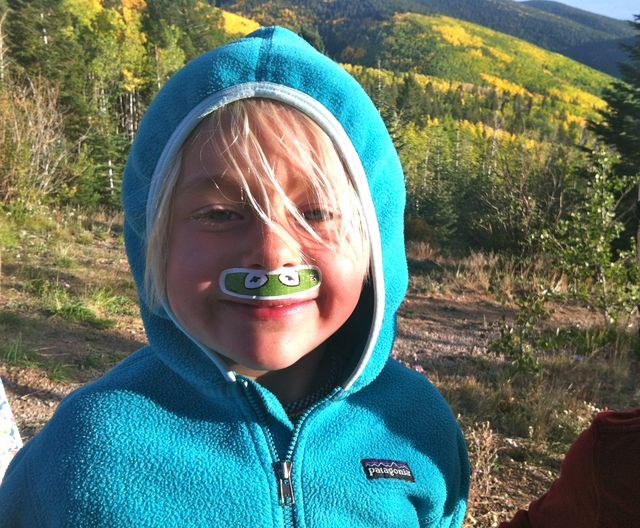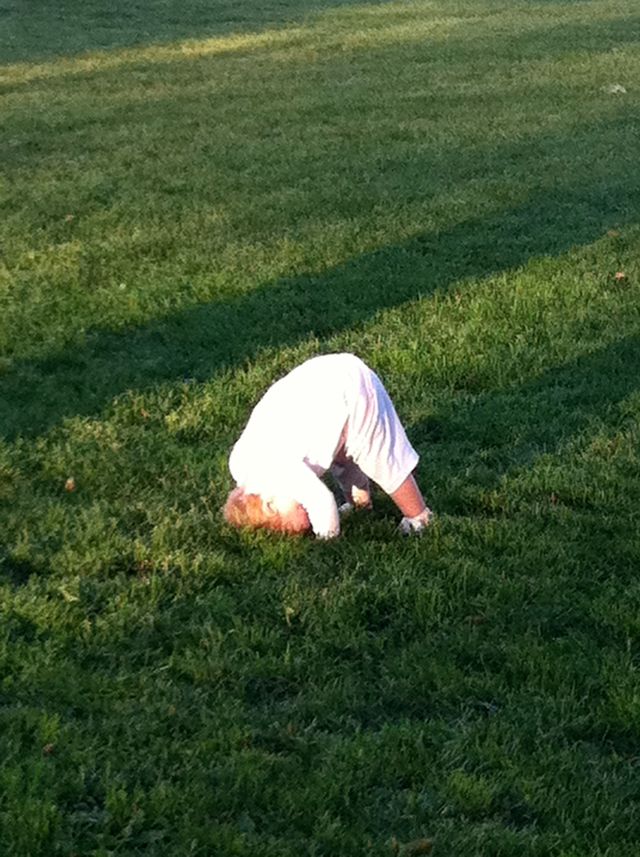
Earlier this week, I took my daughter to get cranial sacral therapy. Pippa is four and recently hit her head on the concrete floor so hard she threw up. My acupuncturist is the one who suggested it, so I scheduled her for 15 minutes with a local healer and all around miracle worker named Bob Schrei, who has been helping me recover from an ultramarathon a few weeks ago. I’d go first so Bob could Rolf my legs, and then he’d work on Pippa’s head. Does it get any more Santa Fe than that?
Cranial sacral therapy, or CST, is an alternative treatment in which a bodyworker uses a light touch to release tension in your head, neck, and sacrum, and encourage healthy energy flow to the whole body. Because it’s so gentle and non-invasive, it’s used often in kids and babies to treat everything from trauma, colic, autism, and even crooked teeth. Though it’s tough to find scientific evidence of CST’s effectiveness, I’ve been in Santa Fe so long that alternative has become the new normal, and I know plenty of parents who swear by it as a way to treat their kids’ battle scars. Friends of mine have tried CST on their newborns in the days after a difficult birth or C-section and reported their babies breathe more deeply and easily, nurse more efficiently, and sleep more soundly.
Bob, who is in his 60s, is an architect, artist, and former Zen teacher who studied CST and trained in Rolfing at the legendary Rolf Institute in Boulder. Since then, Bob has orginated a hands-on healing technique called , a mysterious alchemy of Rolfing and energy medicine that uses body scanning to find and heal energy blockages. Now he spends many weeks each year traveling internationally to teach SourcePoint, and healers come from all over the world to his Santa Fe workshops.
I’ve been seeing Bob on and off for the past 13 years, and it's hard to put into words the profound effect it has had on me. When I broke five ribs in my back after landing on a tree while learning to snowboard, a perpetually injured Ultimate Frisbee-playing friend sent me to Bob. One of my legs was shorter than the other from the impact, and my whole body curled around itself like a misshapen S. I was so crooked I could barely walk without pain, let alone run. After my fourth session with Bob, I had a dream that I went running, and that it didn’t hurt. The next day I did, and it didn’t.
Since then, Bob has helped me recover from childbirth and a chronically stiff neck I thought was from nursing but might have been from the sticky, accumulated grief of losing my dad. Turns out it was also from our terrible, saggy bed. Bob cured my strained Achilles tendon before my last 50K trail race, and when my husband threw his back out lifting a rock and his spine had a right angle in it, Bob straightened him out.
The first thing people do when you say the word Rolfing is cringe and ask, Doesn’t that hurt a lot? Most people assume it’s an obscure and much more excruciating version of deep-tissue massage, where the Rolfer goes after you with his elbow, and puts all of his body weight behind it. It’s true that the purpose of Rolfing is to manipulate the body’s connective tissue, or fascia, in order to improve posture and flexibility, realign the body, and reduce stress and discomfort, but Bob does this through precise pressure, not pain.
When you arrive at Bob’s studio, a tranquil casita in the foothills above town, he watches you walk around the room. Then you get up on the massage table, fully clothed. He spends the first five minutes moving his hands a few inches above your body, scanning for information about all the ways in which it’s out of balance. You can’t feel his touch, but you can sense it from the little frisson of energy pulsing back at you. Once he starts rubbing, pushing, squeezing, and rearranging your fascia, Bob doesn’t talk much. He does talk to himself, though. “Oh, there we go,” he’ll say under his breath when he feels something essential but invisible shift back into place. If you can rouse yourself enough to ask what it was, he might say softly, “Oh that was your tibia. It feels like it had separated a little from your knee.” Oh, that.
If I was going to trust my four-year-old’s fragile noggin to anyone, it would only be Bob. Pippa had fallen off a foam roller I’d carelessly left on the floor and landed on her head. She cried for half an hour straight and said her eyes were blurry. Then she barfed. Alarmed, I took her to the doctor, who checked her thoroughly, said she was fine, and told me to watch her for 48 hours. A couple hours later, she was back to her old wild self again, but this wasn’t the first time she’d bumped her head hard enough to warrant a trip to the doctor, and I worried about lingering trauma.
When I pulled into Bob’s studio the day of our appointment, a woman who’d driven nine hours from northern Colorado to see Bob was just leaving. At my previous session, in a rare show of brute force, Bob had gone after me with his elbow, digging it into my quads, which were bunched up like thick, old knotted ropes. My knee felt like the Tin Man’s, desperately in need of oil. This time, though, he worked my calves, turning them inwards to realign my fascia so gently that I drifted in and out of sleep.
I’d briefed Pippa on what to expect, so when the babysitter dropped her off, she climbed up on the table, stretched out on her back, and closed her eyes like an old pro. Bob placed his hands gently on the back of her head and told her, “If you feel like dozing off, you can.” I’d never seen Pippa lie so still in her entire life (except for when she’s sleeping) and only her flickering eyelids told me she was still awake. When he told her, “You’re very good at relaxing,” I almost fell off my chair. This is a girl who is so wild and alive that everything she does is a blur.
Bob gazed out the window while he slowly moved his hands around Pippa’s head and neck. “Oh, there we go,” he murmured. And to Pippa: “Did you fall on your right side?” There was a long pause while she roused herself and tried to figure out which side was right. “Yes,” she said with a verbal economy that was totally out of character.
Pretty soon it was time to go. Reluctantly, Pippa sat up. “There you go,” said Bob. “Do you feel longer now?” She nodded and gazed up wordlessly at him with a mix of awe and bewilderment, like he was some kind of guru. Her guru. It’s impossible to tell what cranial sacral therapy feels like on someone else’s head, let alone a four-year-old’s. I don’t know what Bob did, or what effects the SourcePoint had on her injury. But it’s good to know that there are alternative ways to treat the battle scars of childhood—knowing her, no doubt the first of many.

For a day or two, I hoped Bob’s peacefulness would rub off on Pippa, and her brain would be so rebalanced she’d start napping again or be content to sit quietly for long periods, looking at books. That hasn’t happened. So far she’s still her hard-charging self, doing laps around the playground on her bike and playing hide-and-seek with her sister behind racks of expensive silk blouses in a clothing store downtown. Greeattt.
But that night, after we’d seen Bob, and almost every night since, she’s asked me as I tuck her into bed, “When can I go see Bob again, and for longer next time?”
Atta girl. She’s hooked.
For more information on SourcePoint Therapy and Bob's teachings and workshops, go to . The Rolf Institute is at .
—Katie Arnold